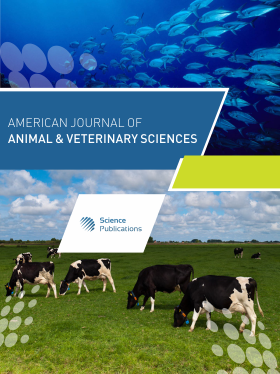Effect of Autolyzed Yeast Supplementation on Productive Performance Meat Quality Visceral Organ and Cecum Bacteria of Broiler Chickens
- 1 Department of Animal Science, Faculty of Agriculture, Kasetsart University, Bangkok, Thailand
- 2 Faculty of Medicine, Kasetsart University, Bangkok, Thailand
Abstract
We assessed the effects of dietary Autolyzed Yeast (AY; Saccharomyces cerevisiae) on the performance, meat quality, visceral organ weights, and cecum bacteria of broiler chickens. We utilized a total of 360 one-day-old male Ross308 chicks. We allocated the chicks to four different dietary treatments, each consisting of six duplicates. Each replica consisted of 15 chicks per pen. The study included four dietary treatments: Control (CON), CON diet supplemented with 0.125% AY, CON diet supplemented with 0.25% AY, and CON diet supplemented with 0.50% AY. These treatments were administered using a corn-soybean meal-based basal diet served as the basis for administering these treatments. The data on different parameters was analyzed using the analysis of variance technique with a completely randomized design. The treatment means were compared using Duncan's multiple range test. The research showed that between days 25 and 36, chicks that were given AY at concentrations of 0.125, 0.25, and 0.50% had lower feed intake and a better feed conversion ratio (p<0.05) than chicks in the control group. Supplementation of dietary AY did not have any impact on the meat quality and texture profile analysis of the broiler. However, the chicks supplemented with AY showed a slight tendency towards a decrease in abdominal fat. The inclusion of 0.25 and 0.50% of AY reduced the presence of E. coli in the cecal digesta when compared to the control diet. Chicks that received AY supplementation showed no significant differences in the levels of Lactobacillus spp. and Salmonella spp. Saccharomyces cerevisiae AY at a dosage of 0.125-0.25% resulted in improved feed efficiency and reduced fat deposition. As a result, the population of E. coli in the cecum decreased.
DOI: https://doi.org/10.3844/ajavsp.2024.299.308

- 713 Views
- 419 Downloads
- 0 Citations
Download
Keywords
- Cecal Microbial
- Growth Performance
- Intestinal Organ
- Sugarcane Byproduct
